Okay, campers, it's time to make a didgeridoo. For
those of you who do not know what that is, it is a musical instrument
that is native to Australia, traditionally played by the Aborigines.
Step one:
Find an authentic Australian Aborigine. I found this guy:

He is Lewis Burns, a native of Dubbo, New South Wales, Australia.
Step two:
Go to Laguna Beach, California. This will work best if it happens to be
a day when Lewis is in town. Arrive very early in the morning on a
Sunday. Take a moment to enjoy the empty beach. It will not be this way
much longer.
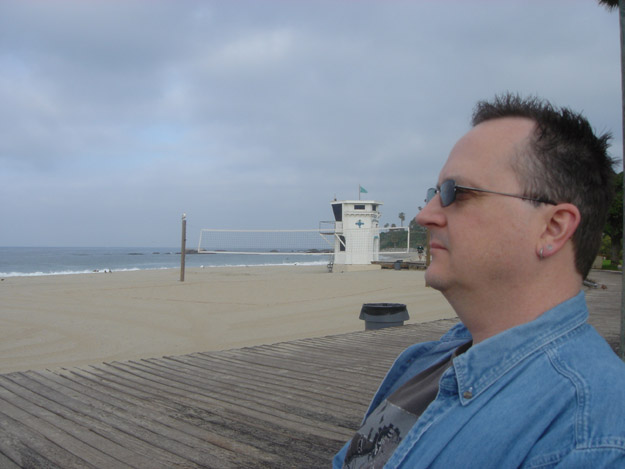
Also admire the town itself. Again, this will not be like this for very
long.
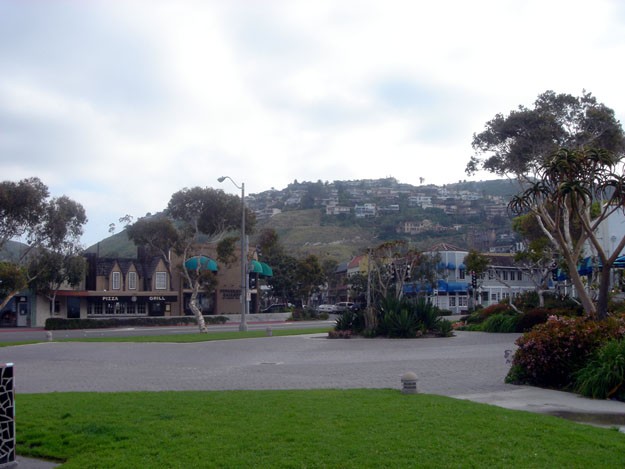
Step three:
Find a nice home where people just happen to be hosting a
Didgeridoo-making workshop taught by Lewis. When you arrive, greet
everybody, shake hands with Lewis, then look over the supply of
Eucalyptus branches.
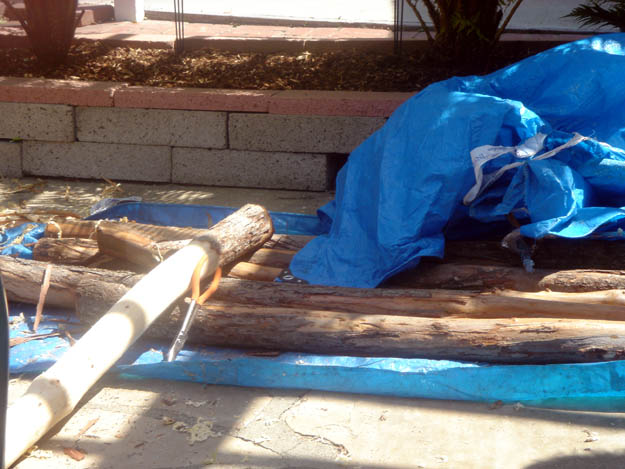
These Authentic Eucalyptus branches came from Australia, carefully
handpicked by Lewis. He found a tree that had been eaten by termites,
so the branches were hollow. Each one was cut to length and sealed by
Lewis. Then American Internal Security tried to detain them at the
airport. Apparently Eucalyptus may be a tool of the terrorists.
Step four:
Carefully examine the branches until one calls to you. Examine it
again, to make sure it called to you in some mystical manner and claim
it as your own. (or just pick one that looks to your eye like it will
make a good didgeridoo.)
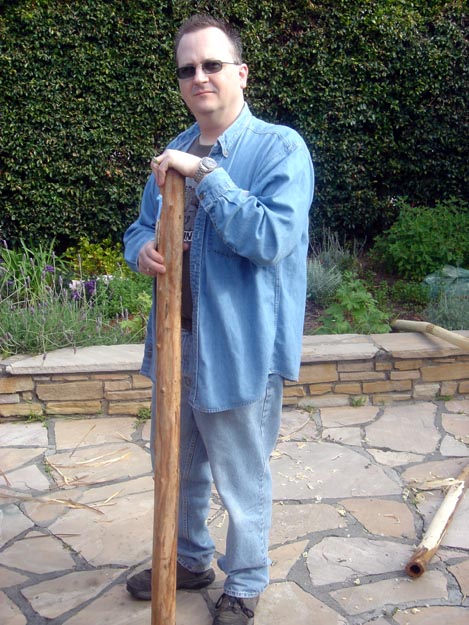
any of these branches will make a good didgeridoo, but each will sound
a bit different, and only one will call to you. (or, in any event, you
can only pick one.)
Step five:
Begin the process of removing the bark. This involves using a knife or
spokeshave to slowly peel away the bark from the underlying timber.
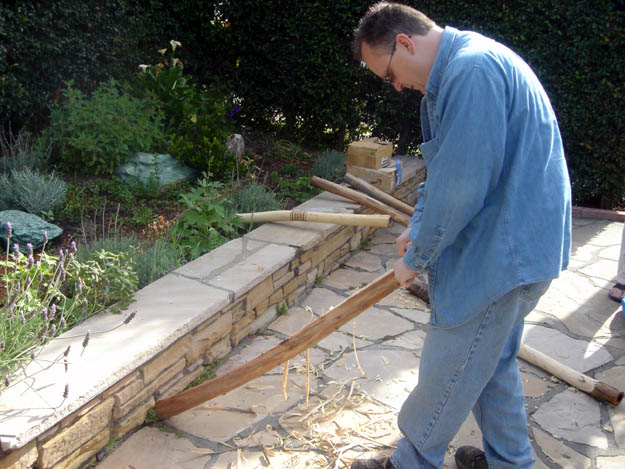
Continue stripping the bark, carefully. If you go at to deep an angle,
you will gouge the timber. Too shallow and you will skip off the top
with only a small strip of bark to show for the effort.
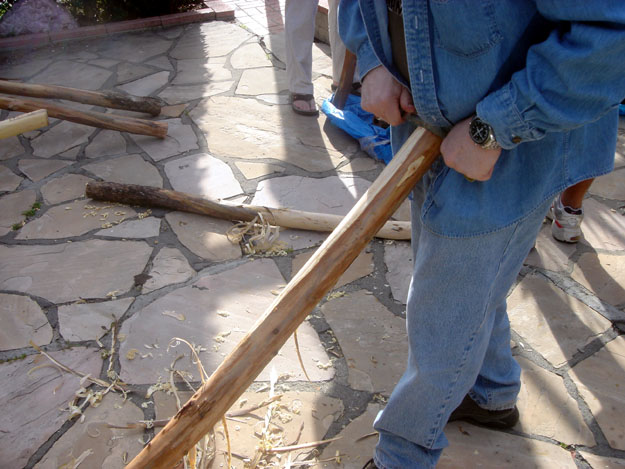
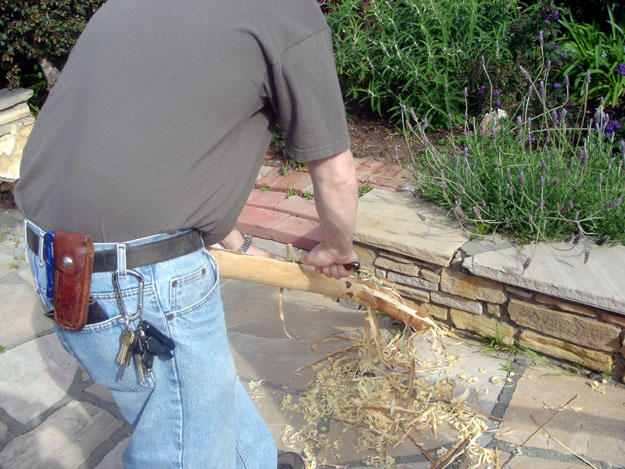
It is a long, slow process to strip all the bark off of a branch, even
one this small...
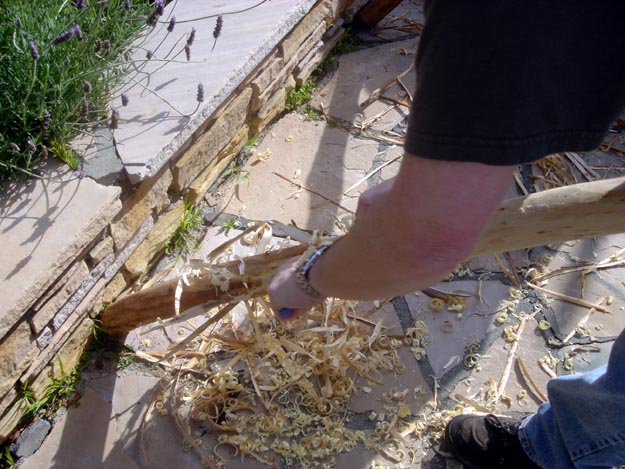
While you are doing this, Lewis is also making a Didje. His work is so
effortless, it will make you feel inadequate. Do not worry, however.
His ability to play the Didje will make you feel even more inadequate.
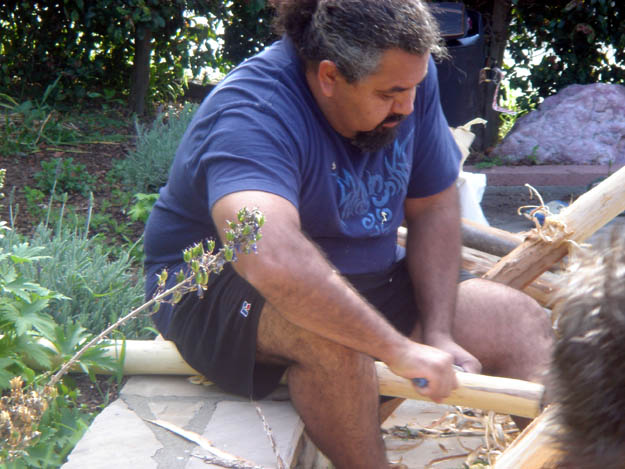
Step six:
Allow Lewis to demonstrate the finishing of the end. This is a bit
tricky, and requires a bit more delicate of a touch than the body.
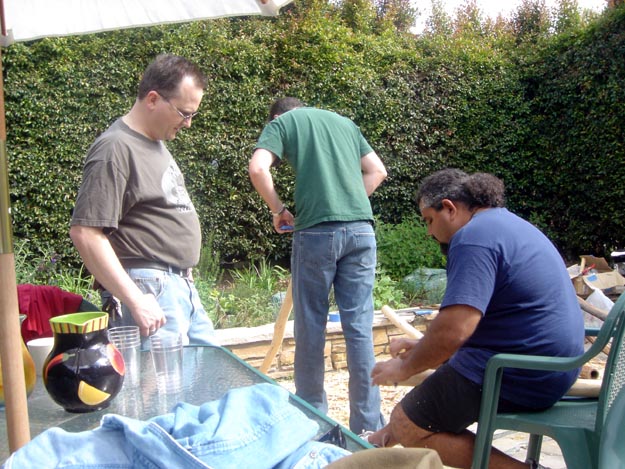
Then you do the same.
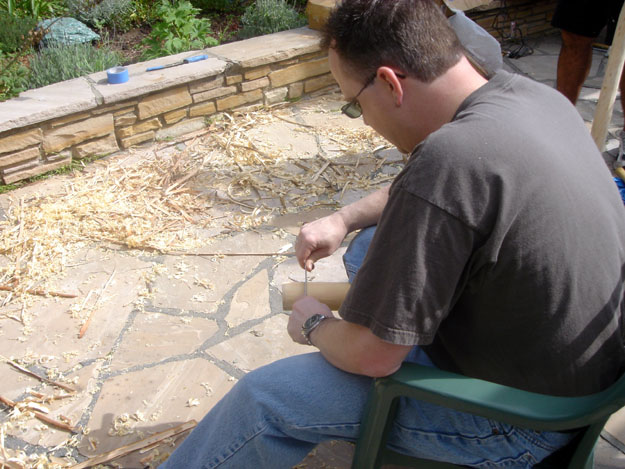
Your knife is also used as a scraper. This makes the wood smooth and
gouge-free.
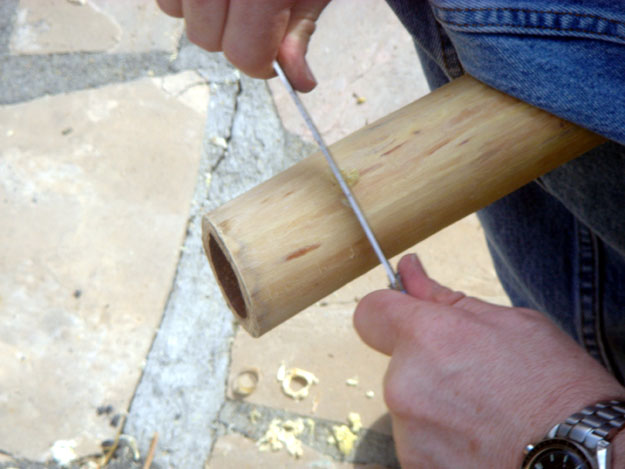
Step seven:
Using a hammer and chisel, carefully expand the end of the didje. The
termites did the majority of the work, but they just were not up to the
task of making a fine musical instrument. You must help them a bit.
Dear God! Is that my gut?????
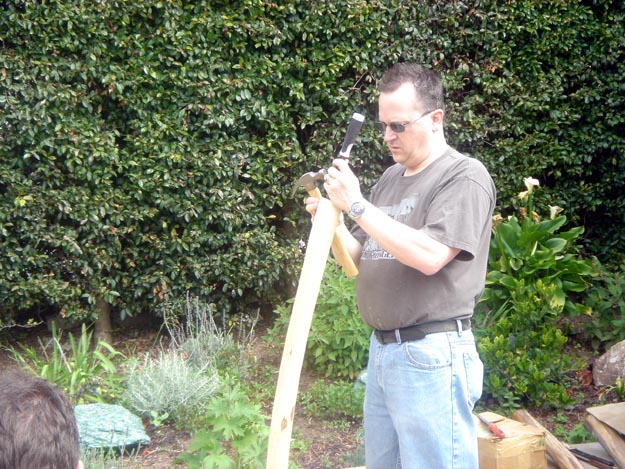
Step eight:
Use an Ancient Aborigine Invention known as "Sand-Paper" to carefully
smooth the mouthpiece. Spinters in the lips are a bitch. Just as
Pinoccio's girlfriend.
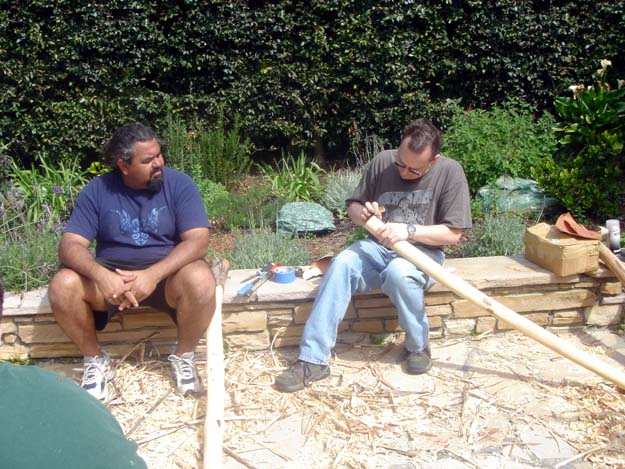
Step nine:
If all is carefully done, you are now the proud owner of a wooden tube!
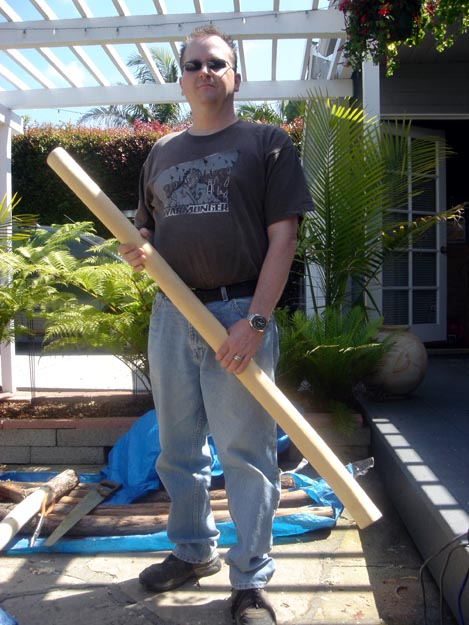
Break time!
Enjoy the wonderful meal prepared by your hosts. Eat it while turning
green with envy at the view from their multimillion dollar home
overlooking the town of Laguna Beach and the ocean.


Step Ten:
Decorating time! Take your wooden tube and grab a wood burning tool.
Talk to Lewis about traditional designs and select one. Begin burning
into the wood.
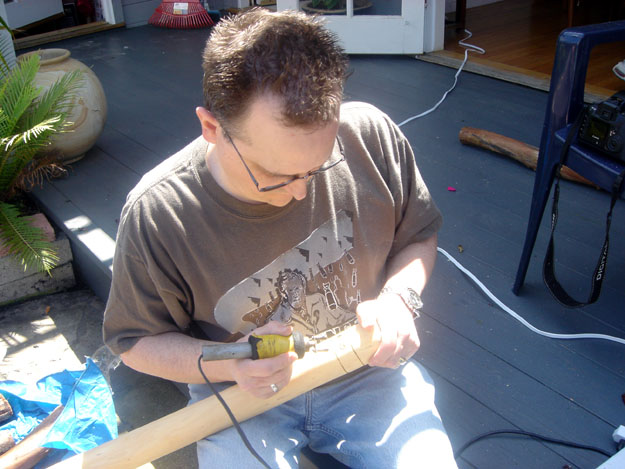
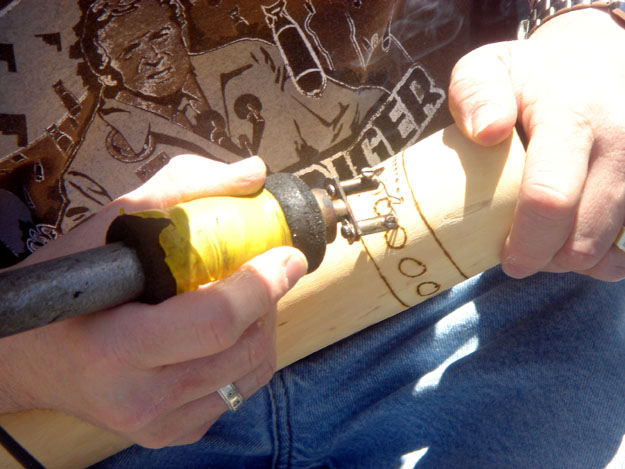
Continue onto the main design, in this case a kangaroo. My God! Is that
my hairline???
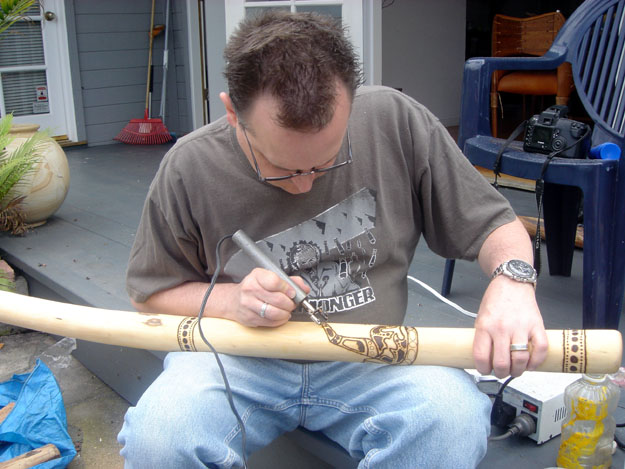
The electric wood burner, while not exactly traditional, does a great
job of inscribing the image you have selected.
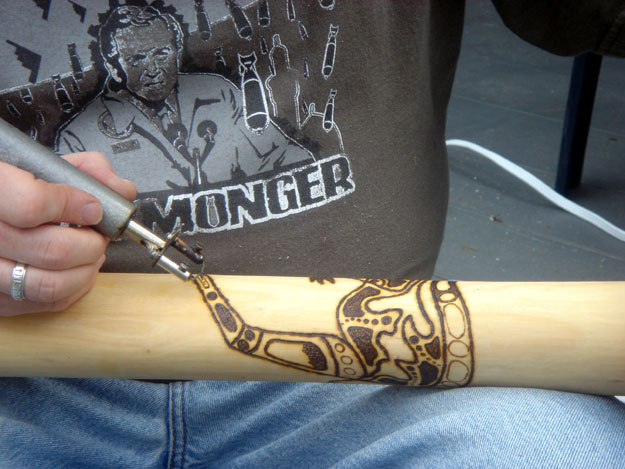
Step Eleven:
Add a beeswax mouthpiece and proudly display your accomplishment.
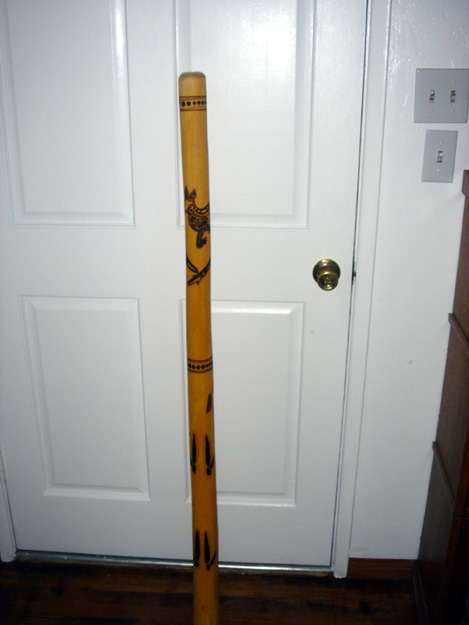
And here is a composite image of the Kangaroo that was burned into the
didjeridoo:
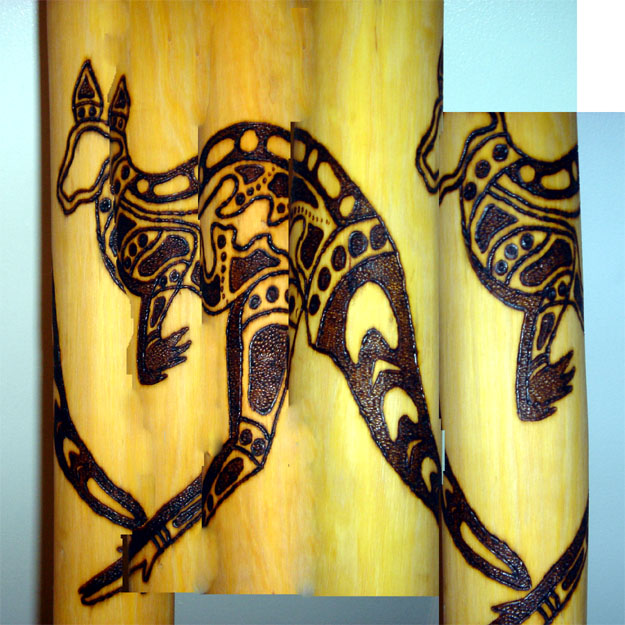
Lewis explained that the kangaroo image traditionally done on
didjeridoos shows how the meat was to be divided after a kangaroo hunt.
Below, on the lower half of the didje is shown the footprints of the
animal depicted above.
Now, learn to play the damn thing. While not difficult, always
remember, you will never sound as good as Lewis...
And, as for our hosts, their
shop can be reached here.























